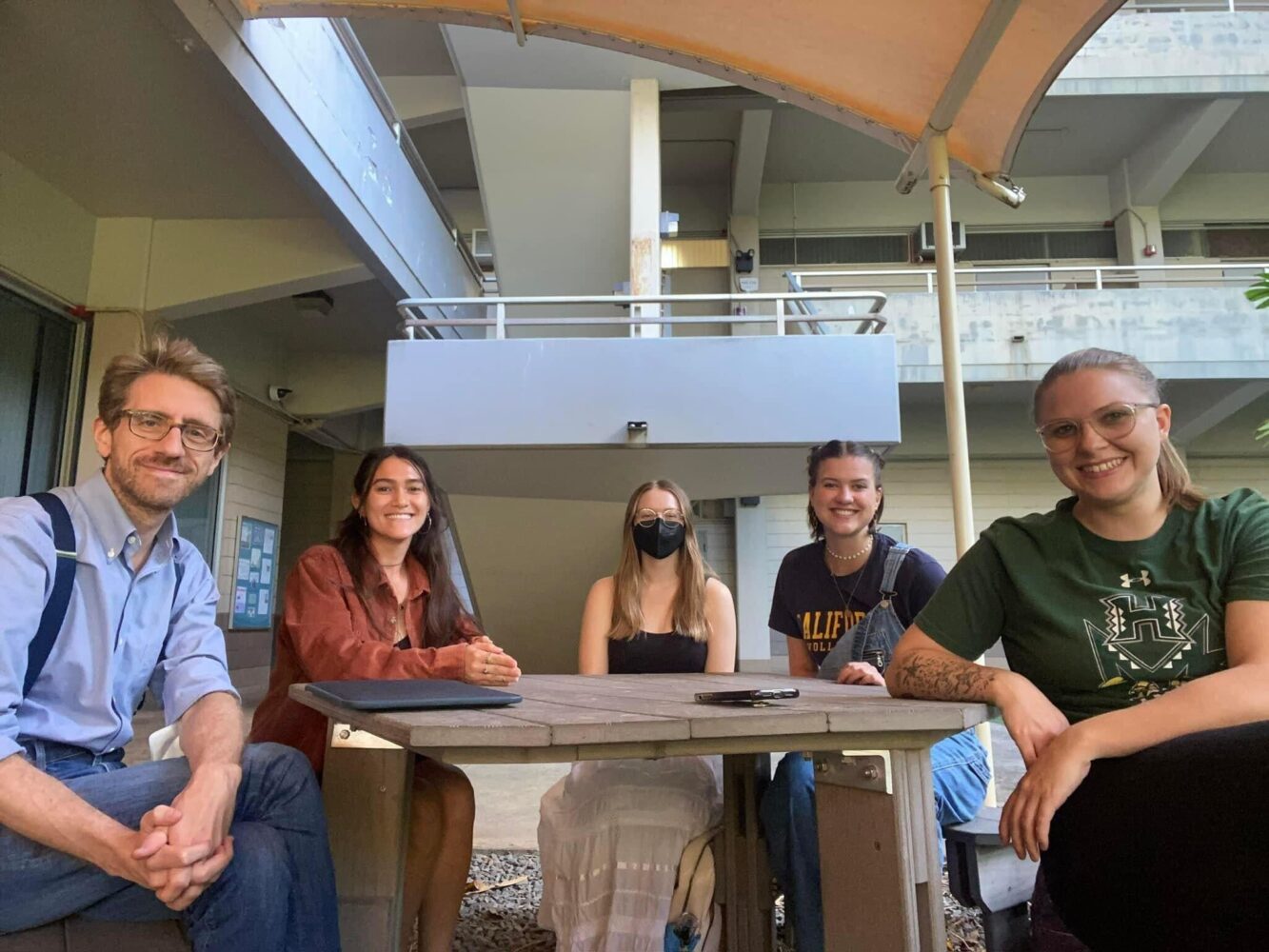Student ‘aeronauts’ build giant antenna to explore far reaches of Earth’s atmosphere
 The ionosphere and aurora as seen from the International Space Station. Credit: NASA
The ionosphere and aurora as seen from the International Space Station. Credit: NASA
Aeronomy is the study of the upper layers of the atmosphere, where the air is so rarefied that it’s almost imperceptible. When University of Hawai‘i at Mānoa atmospheric sciences professor Giuseppe Torri taught his students about phenomena that can occur in the ionosphere hundreds of miles above Earth’s surface, curiosity and creativity launched a group of four undergraduates on an exciting research journey.
Arianna Corry, Emily Harris, Kyra Dyer, and Grace McCoy, undergraduate students in the UH Mānoa School of Ocean and Earth Science and Technology (SOEST), decided to team up to build an ionosonde, which is a giant antenna that would enable them to observe one of the highest layers of the Earth’s atmosphere. The ionosphere plays an important role in radio transmission. Any disturbance in this region, such as those caused by the Sun’s capricious moods (solar flares, geomagnetic storms, etc.), can severely affect radio transmissions and cause blackouts.

“Some of us are long-time sci-fi fans–especially of the amazing work of Arthur Clarke–and we wanted a name that could encapsulate the sense of adventure that we all experienced reading the books that we love so much,” said Corry, who graduated this semester with a degree in atmospheric sciences and will start a master’s degree program at SOEST in the fall. “When Giuseppe mentioned that the branch of atmospheric science that studies the upper layers of the atmosphere is called ‘aeronomy’, we immediately thought about the name Aeronauts. It seemed very appropriate for the spirit of the journey.”
Progress and challenges of innovation
Certain radio signals emitted by various sources on the planet, such as over-the-horizon radars, are reflected back to Earth’s surface by the ionosphere.
“The ionosonde is essentially a sophisticated radio that allows us to pick up these signals and, through some complicated mathematics, reconstruct the altitude at which they were reflected,” said Harris, who is an earth sciences undergraduate student. “In simple terms, the ionosonde allows us to determine the height of the ionosphere.”
With funding from the UH Mānoa Undergraduate Research Opportunities Program and Torri as their mentor, the students developed a project to build an ionosonde modeled from a design implemented and tested by Jens Floberg of UiT The Arctic University of Norway.

“It’s been a lot of fun learning about topics of the ionosphere, radio propagation, and GPS applications in class and on our own digging through academic literature and scientific forums,” said Dyer, who graduated this semester with a Global Environmental Science bachelor’s degree. “But to actually get our hands dirty and ‘see’ the ionosphere was a completely different experience which brought our appreciation for science to a completely different level.”
“Each of these extraordinary students has different skills that they bring to the table, and over the months they have been really great at interacting and leveraging each other’s skills in a collaborative and extremely productive way,” said Torri. “They are also all extremely motivated. Even when they went through some tough times—the code wouldn’t comply or we couldn’t get signals—they never lost their spirits and just kept pushing. Aeronauts don’t give up!”
Peeking at the plasma layers
Though they are still in the early stages of gathering observations with their ionosonde, the students are gathering a wealth of data.
“Our early results are showing consistent reflections of high-frequency signals off the ionosphere’s outermost layers of plasma: the lower altitude E and higher altitude F regions,” said Corry. “It is incredibly fascinating to see that, although invisible to our eyes, the atmosphere is filled with these signals that are propagating in all directions, bouncing off the ionosphere, being reflected.”

Not only did this experience offer an opportunity for the students to learn more about the upper layers of the atmosphere and how antennas function, but they also learned important skills in project management, collaboration, and communication with international scientists familiar with the software that was integral to their project.
“We will certainly carry with us for the rest of our lives the awe that we all felt when we started receiving data, and also appreciate how this project made us better at communicating and leveraging each other’s strengths to achieve our goals,” said McCoy, who is working toward SOEST’s five-year combined bachelor’s and master’s degree program in atmospheric sciences.
“These students have taught me what it means to be determined and to work together toward a common goal,” said Torri. “I’m so proud of their accomplishments and how they were able to overcome the odds and cross the finish line.”
Read also on UH News.




